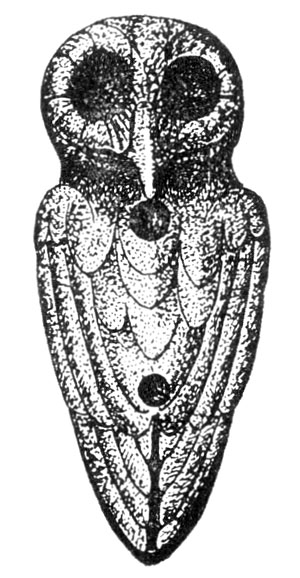
D. TROY CASE & CHRISTOPHER CARR. The Scioto Hopewell and their neighbors: bioarchaeological documentation and cultural understanding. xviii+775 pages, 82 illustrations, 58 tables, CD-ROM. 2008. New York: Springer: 978-0-387-77386-5 hardback $139 & £73.50.

Review by George R. Milner
Department of Anthropology, Pennsylvania State University, USA
(Email: ost@psu.edu)
Two major objectives are met by this book: it furthers our understanding of Hopewell (Middle Woodland) societies in southern Ohio from the first century BC to the fourth century AD, and it presents a remarkable database — on a supplementary CD — on mounds and their contents to support those conclusions. Long regarded as the first of two great cultural florescences in eastern North America, Hopewell societies have been the subject of great interest since the nineteenth century. Many of Ohio's sites, including those in the Scioto Valley, were dug as much as a century or more ago, most notably mounds containing burials and elaborate artefacts. Unfortunately, that considerable work has not translated into a commensurately deep understanding of these societies, their origins, and what eventually became of them.
Through their research, Case, Carr and colleagues highlight what is perhaps the single biggest problem facing archaeologists in the United States: much of what should be known is essentially forgotten (except perhaps by local specialists) because sites were never adequately described in the literature or, if published, information is deeply buried in old, obscure and unindexed reports. The authors have dedicated years to wresting whatever they can from existing collections, field notes and assorted publications. Particularly noteworthy is their concern with database accuracy (e.g. multiple checks of original sources), terminological uniformity (e.g. artefact classification) and observer consistency (e.g. age and sex estimates). As a guide to how the database was compiled, its strengths and its limitations, this book will continue to be cited for many decades to come. Other researchers developing similar databases would benefit greatly from paying close attention to how the Hopewell information was assembled, documented and checked.
The authors produced a 'thick prehistory', meaning a contextually rich characterisation of ancient life based on multiple lines of evidence that situates people within their natural, social, and ritual landscapes. Interpretations about what artefacts, in particular, signified to Hopewell people are supported by a compilation of historical information on the meaning and use of many items. While a considerable span of time separates these sources from the archaeological remains, continuity was sufficient to suggest possible associations that, in aggregate, allow the identification of certain kinds of individuals and groups. Among them were shamans held in high esteem, to judge from their prominence in mortuary-related proceedings, and clans identified by totemic animals. Also noteworthy is how the landscape's general appearance might have been related to the Hopewellian world view, permitting a fuller appreciation of the relationship between settlement choices and environmental settings beyond the usual coverage of resource availability.
Cooperative and complementary relationships among groups that made up Hopewell societies are emphasised, as are their varied roles in the social and ritual lives of these people. Less convincing is a dismissal of the standard interpretation that great deposits of valued objects are indicative of competitive displays by these very same groups. There is no reason why all of these interactions could not have been simultaneously in operation. Virtually all archaeologists, however, would agree with the authors that this horizon featured unusually peaceful relations among Eastern Woodlands groups, including those in Ohio.
A fundamental change in world view is said to lie at the root of what happened during Hopewell times, including a rise of flamboyant ceremonialism, the construction of many mounds and earthen enclosures, a steep decline in conflict, an increased permeability of group boundaries, and a shift in subsistence practices towards a greater emphasis on cultivated native plants. Changes in how people viewed the natural and supernatural worlds, and their place in them, certainly took place, as indicated by elaborate artefacts and earthworks rich in symbolic content. Yet the argument that everything ultimately sprang from a transformation in beliefs, with all else following in train, will be met with widespread scepticism. Figure 5.1 showing 'causal pathways of change', originating with new ideas, consists of a complicated array of 18 boxes with 28 connecting arrows, some pointing back and forth and others forming loops. There are simply too many variables connected in different ways to test the sequence and strength of relationships. More importantly, no reason is provided for why people, seemingly spontaneously, modified their outlook on the world and their relations with each other. Here the authors' contextually nuanced 'thick prehistory' breaks down into a simple prime-mover argument where ideas arising for no apparent reason drive all else.
Despite such concerns, Scioto Hopewell ranks among the most provocative and data-filled books on Eastern Woodlands prehistory to appear over the last decade or so. It challenges us to re-examine long-held perceptions about these societies, and in combination with the extensive database this book will surely have lasting value. Future archaeologists will likely look back on this book as marking a major watershed in the study of Ohio's Hopewell people.